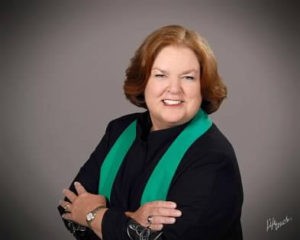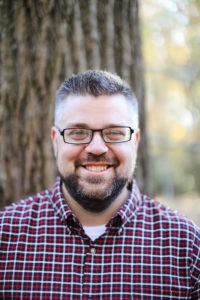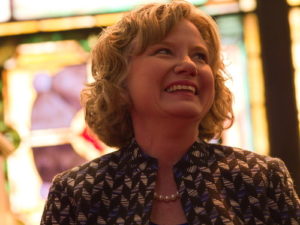Julie Schaaf said she immediately identified with the term “pastor separation syndrome” when she first heard it recently.

Julie Schaaf
The concept refers to the loneliness, frustration and grief some clergy have endured after months of pandemic-induced physical separation from their congregations.
“I thought, yeah, that’s me,” said Schaaf, pastor of Nazareth Presbyterian Church in Moore, S.C.
Schaaf said she heard the term in the pastoral coaching group she attends through Pinnacle Research Associates and found it to summarize the isolation and sadness she feels from being unable to minister to congregants in their darkest moments.
“It’s like being a carpenter and losing your hands.”
“The purposes to which God has called me, I can’t do. It’s like being a carpenter and losing your hands,” she explained.
Similar sentiments have been rising in frequency and clarity in coaching sessions in recent weeks, according to Mark Tidsworth, Pinnacle’s founder and team leader. “We were all hearing the same things, so I jokingly said we are seeing ‘pastor separation syndrome’ here. It was just a spur-of-the-moment kind of insight.”

Mark Tidsworth
But the term has resonated with many clients because it describes mounting feelings they have experienced since the COVID-19 pandemic closed churches, instituted social distancing and barred clergy from visiting hospitals, nursing homes and members’ homes.
“This is not an official clinical term, but it really seems to capture what many pastors are experiencing at this time,” Tidsworth said.
It also reflects the exhaustion of nine months of phone- and Zoom-based ministry and varying degrees of virtual worship and Bible studies, he said. “The shine has worn off the many things we are doing to try to stay connected, and pastors are feeling the alienation and isolation.”
Especially troubling to some clergy is seeing members become accustomed to the resultant lack of pastoral interaction. “Some are going to the hospital for surgeries and not bothering to contact the pastor or the church.”
Tidsworth listed some of the symptoms of the condition in a recent blog post. They include persistent fears of “losing relational connections,” being sapped of energy, ebbing creativity and feelings of uselessness.
“As we compared notes in our team meeting, we recognized that PSS is rampant, spreading like a virus through the population with whom we serve each day,” he wrote.
Clergy afflicted with the syndrome must find ways to accept and adjust to the pandemic reality. Therapy, clergy cohorts and coaching can help. “That would free them up enough to look for ways to be effective pastors in these conditions,” Tidsworth suggested.

Patrick DeVane
But doing so can be a tall order for minsters called to provide pastoral ministry to people in difficult times, Schaaf said. “Almost everything that’s being asked of us right now is completely antithetical to how I am wired as a person, how I am wired as a pastor and what I have been called to do.”
It was excruciatingly painful earlier this year as the oldest man in the congregation lay dying in a retirement community, she recounted. “That’s what I am called to do — to be that person in the flesh, that presence when people need to be reassured.”
The emotional toll is mostly sadness, Schaaf said. “I just feel like there is a hole in my life. To me, it’s a sadness from not being able to help other people process their own sadness.”
Patrick DeVane, senior pastor at College Parkway Baptist Church in Arnold, Md., said his experience of the syndrome is one of mourning. “There is a sadness and a grief that comes with these forced separations — from the sudden halting of most things we previously used to practice and express our faith.”
Livestreaming and Zoom cannot replace the impromptu talks he enjoyed with individuals after church.
Livestreaming and Zoom cannot replace the impromptu talks he enjoyed with individuals after church, he said. “These are conversations we didn’t plan but they were beautiful and serendipitous. I have not found any way to match that through our social-distancing practices and our virtual worship.”
To cope and to maintain effectiveness, DeVane said he has leaned into and expanded support networks that include mentors, coaching, fellow ministers, friends outside the church and therapy. “I have had to completely re-imagine what it looks like being faithful people together when you can’t be together.”
So has Christy McMillin-Goodwin, pastor at First Baptist Church in Front Royal, Va., a congregation of mostly seniors located about 60 miles west of Washington, D.C.

Christy McMillin-Goodwin
Many in her church struggle with technology, which has presented limits on virtual approaches to combat separation. And McMillin-Goodwin has managed only two hospital visits since the coronavirus outbreak and remains barred from visiting members in nursing homes and assisted living facilities.
“That’s really difficult because we have a number of people in those communities,” she said. “That’s hard because I am called to be there with people who are going through difficult times.”
She has tried other approaches, including the “ding-dong drop” that delivers gift boxes containing pumpkin pie, signed cards and devotion books to 40 families a month. “And I have started doing driveway chats where I pull up and bring a chair and we talk in the driveway — but we haven’t been doing that since it got cold.”
Self-care is another way through the isolation, said McMillin-Goodwin, who connects weekly with three other pastors in town and also participates in a clergy cohort through Pinnacle.
“What I’m hearing that is helpful to me is, ‘this too shall pass,’” she said. “It’s just important knowing you are not alone.”


